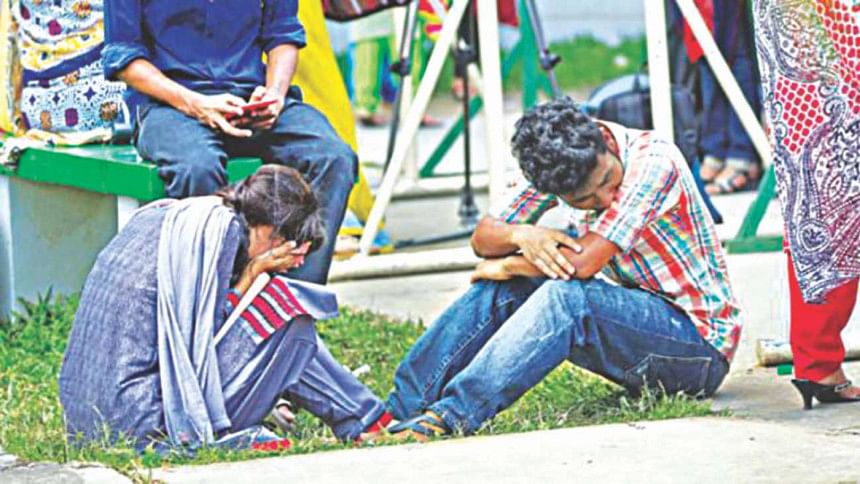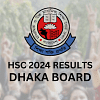What the HSC results say about the state of our education

This year's HSC results saw a significant fall both in the pass rate and achievement of the highest grade. Compared to the previous year, the overall pass rate of the 8 general education boards has dropped by more than 5 percent to 66.84. If we add the other two equivalent exams—Madrasah and Technical Education—the overall pass rate has dropped by more than 7 percent to 68.91. The number of GPA-5 holders has dropped by more than 20,000. Out of the 11.63 lakh students who appeared for the exams this year, only 8.01l lakh came out successful. The pass rate in English has been disappointing. More than 2.71 lakh students failed in English causing a significant fall in the overall pass rate.
The worst was the shocking difference in pass rates between the different boards. Sylhet Board, with a 72 percent pass rate, is at the top of the chart whereas Comilla Board, with 49.52 percent, is at the bottom and Chittagong board with 61.09 occupies the second last position. The figures of the other boards like Dhaka, Rajshahi and Jessore are around 70 percent.
The Education Minister, Nurul Islam Nahid, identified the improved method of evaluating answer scripts that has recently been adopted, termed as "standardisation of answer scripts", as the cause for the fall in pass rate. If that is the case, then we accept his contention with grace but that does not explain why there is such a big difference in the pass rates under different boards, especially that of Chittagong and Comilla.
Comilla Board, in particular, had a shockingly poor performance. Its pass rate of only 49.52 percent is less than the overall pass rate of the 8 boards by 17.32 percent. A little over 1 lakh students took part in the exams. More than half of them have failed. Only 678 of those who passed got GPA-5. The Chairman of the Board ought to find out the real cause of such a disaster and take immediate measures to stop the recurrence of such a dismal picture.
Another worrying part of the entire scenario is the huge difference in pass rate and GPA-5 not only between the boards, but also between the urban and rural institutions. Whereas the number of GPA-5 holders in the entire Comilla Board is only 678, Adamjee Cantonment College in Dhaka city alone had 1,121 students getting GPA-5 out of the 2,156 students that appeared for the exam this year. The same is true for most other institutions of the country. The pass rate of Adamjee Cantonment College, and for that matter of many other institutions of the big cities, is more than 98 percent, whereas the pass rate of Sujat Ali Government College, Debidwar, Comilla, for example, is only 24 percent.
The consequence of this disparity in the result pattern between urban and rural institutions is the deprivation of the students, coming from rural areas, from higher education and lucrative jobs. If the eligibility for admission test of the recognised public universities and colleges is GPA-5 (which is likely to be), most of the students coming out from the rural institutions will be deprived of the chance of even taking the admission test, let alone get admission.
The reasons for this poor performance of the rural institutions are many. These institutions seriously lack quality-teachers and educational equipment, not to mention infrastructural facilities. Many of them do not have properly trained English teachers. Most of the students of these institutions are from low income group families. They cannot afford private coaching or a good private tutor. They have to depend mostly on the lessons given in their classrooms. It is time for the policy-makers in government, educationists, as well as the affluent members of society to take the situation seriously and do all that is necessary to reduce the gap before things take a turn for the worse.
The standard of our education is certainly not at par with that at the international level. It is, in fact, well below it. We need to improve the quality of our education at any cost to compete in the international market. Reacting to this year's HSC results, Prime Minister Sheikh Hasina had rightly said that she was more interested in the improved quality of education than the pass rate or the number of GPA-5 holders.
Even if the introduction of the "standardisation of answer scripts" is the main cause for the fall in pass rate and grade, as the education minister claims, it still does not explain as to how this measure alone can improve the standard of education in the country. If we really are sincere about improving the quality of our education, we have to find answers to the other issues like improving the quality of teachers, training facilities, proper textbooks, suitable syllabus, private coaching, guidebooks and so on. We have to ensure that students are freed from the vicious clutches of coaching-centres. We have to ensure that teachers take their classes regularly and sincerely and do not lure their students towards private coaching. We have to remember that many of the students, especially those coming from the low income group, cannot afford the cost of private coaching.
Hussain Imam is a retired merchant navy officer.
E-mail: [email protected]








Comments